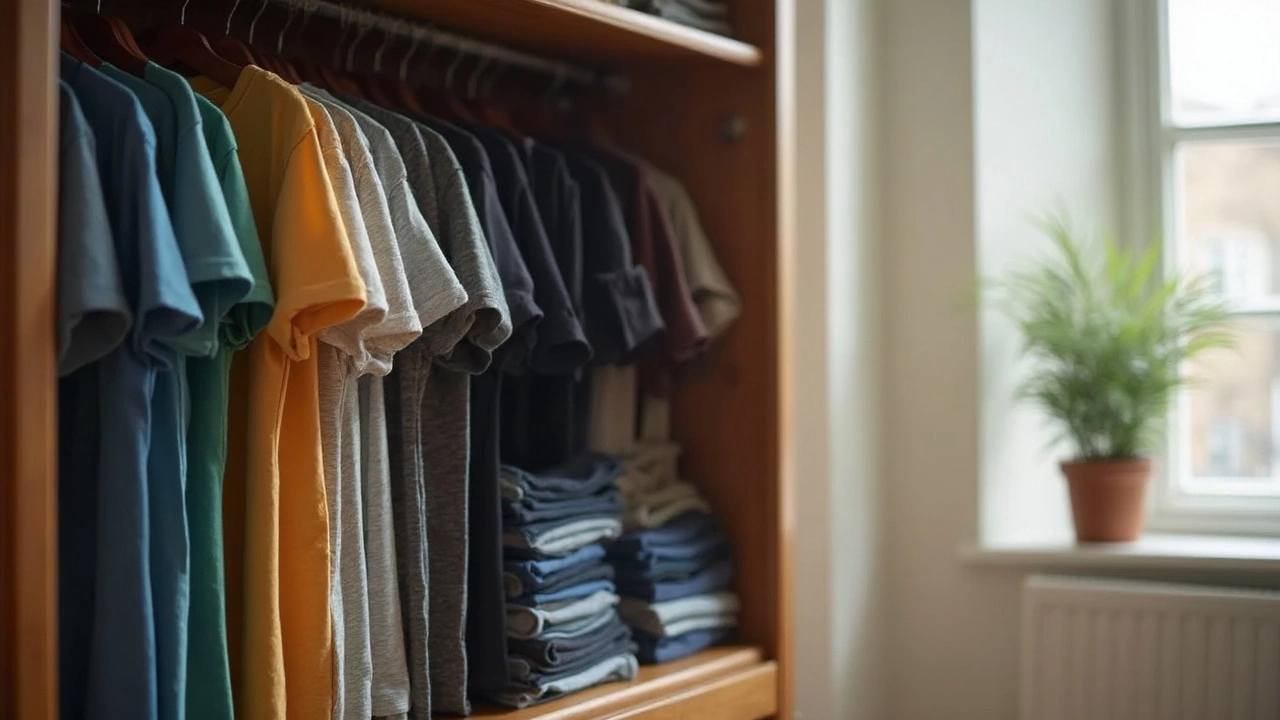Hang or Fold: Smart Ways to Store Shoes and Clothing
Ever stare at a cluttered closet and wonder if you should hang or fold that pair of shoes or that sweater? The right choice can keep your pieces looking fresh and save you space. Below are easy, no‑fuss ways to decide when to hang, when to fold, and how to do it right.
When to Hang
Hanging works best for items that wrinkle easily or need airflow. Light jackets, blouses, dresses, and especially shoes with a shape that benefits from staying upright belong on a hanger or a shoe rack. A simple wooden or metal shoe rack lets you keep sneakers, boots, and even delicate sandals upright, which stops the toe box from getting squashed. If you have a pair of artisanal shoes from a local designer, hanging them also showcases their craftsmanship.
For clothing, use hangers with a non‑slip surface. Velvet‑covered or wooden clips prevent slips and keep the garment’s shoulders in shape. Keep the closet temperature stable; extreme heat can warp shoe soles and fade fabrics. A quick tip: place a breathable cloth bag over shoes you’ve just cleaned. It lets air flow while protecting them from dust.
When to Fold
Heavy knits, jeans, and sturdy fabrics are perfect for folding. Folding reduces the amount of vertical space you need, letting you stack more items on shelves. When you fold shoes—think soft loafers or slip‑ons—use a shoe box with a lid. Lay the shoe flat, place a thin tissue paper inside to keep its shape, then close the box. This method stops the shoes from getting crushed and makes them easy to pull out when needed.
For clothing, follow the “file‑fold” method: lay the garment flat, fold the sides toward the center, then roll or fold in thirds. This keeps the item flat and prevents deep creases. Store folded pieces in clear bins so you can see what’s inside without digging.
Mixing both methods in the same closet works well. Hang your statement pieces—like a designer coat dress or a pair of handcrafted boots—and fold everyday items such as t‑shirts and chinos. This balance keeps your favorite items ready to wear while maximizing storage capacity.
One more practical tip: rotate seasonal items. When summer ends, shift sandals and light dresses to a higher shelf or a storage bin. Bring out winter boots and coats to the hanging area. Rotation stops items from gathering dust for months and makes sure you always know what you have.
By deciding whether to hang or fold based on material, shape, and how often you wear each piece, you’ll keep your wardrobe looking new longer. A tidy closet also means less time searching for the right outfit and more confidence in every look you choose.

Is It Better to Hang T-Shirts or Fold Them?
Deciding whether to hang or fold your t-shirts might seem trivial, but it has a real impact on space and shirt longevity. Understanding the benefits of each method can help you make the most of your closet space and keep your tees looking fresh. Discover practical tips to store your shirts efficiently while catering to your lifestyle. Explore how fabric type and closet space influence this decision. Let's dive into practical advice for an organized and wrinkle-free wardrobe.




